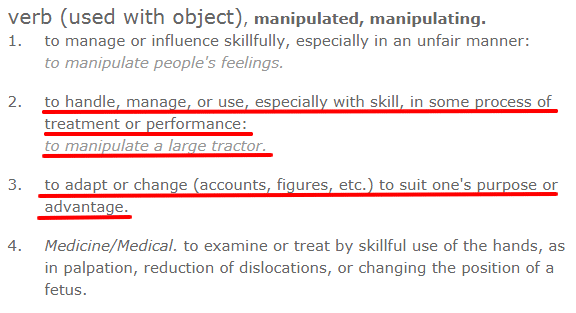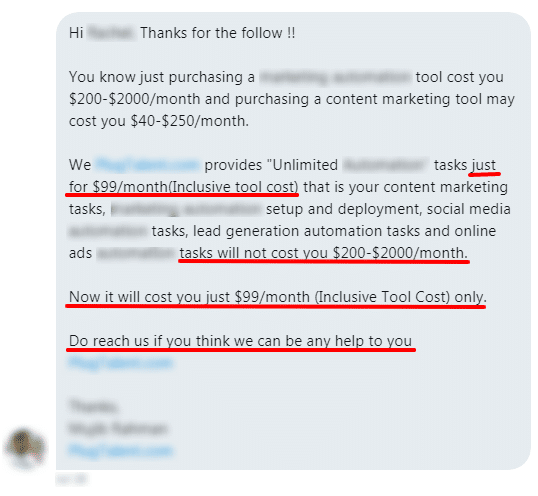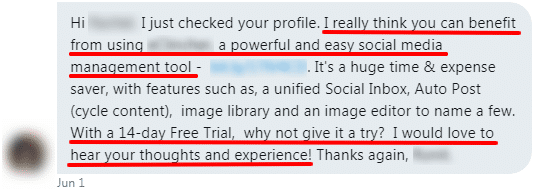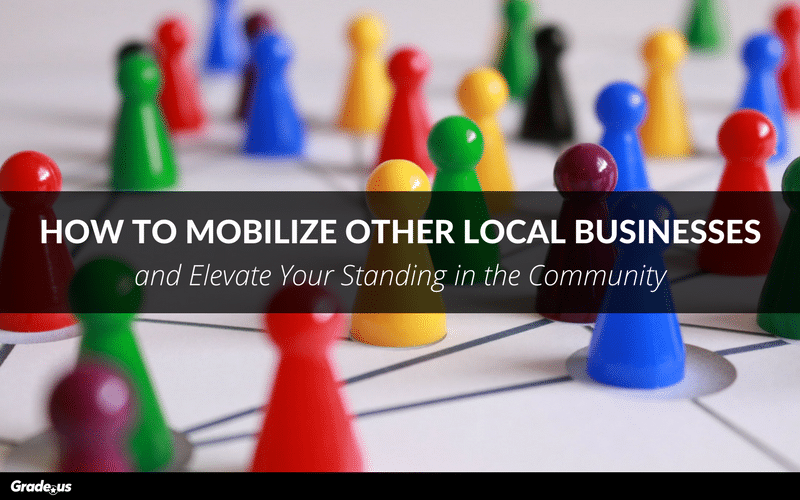Your local businesses is under intense pressure.
It’s the nature of running a local businesses – you’re fighting for a large slice of a small pie. Your customers have an abundance of options, both online and offline.
You’re looking to elevate your standing in the community, because it’s an important part of running a local business. You know that improving your standing in the community makes it much easier to attract, win, and keep customers.
Sure, you could do it on your own, but success is far more likely if you have a team.
At this point we run into our first problem
We’re not sure how to mobilize other local businesses. If you’re like most people, you don’t know how to work with other businesses to elevate your standing in the community.
You probably know it’s important.
But the ins and outs of getting that done? The details are hazy at best.
It sounds complicated, difficult and messy. Why would other businesses want to work with you? Won’t they want to set things up so they come out on top?
Why would your competitors work with you? Do you even want to work with competitors?
Right about now the objections and fears are swirling around, am I right?
Not only is it in your best interest to mobilize other local businesses in the community, it’s also inevitable. If you’re part of a local community, you’ve already interacted with other businesses in your area.
What if these local businesses were eager to send you customers?
What if you elevated the standing of local businesses so much so that they jump at the chance to help you in the future? Sounds incredible doesn’t it?
How exactly do you go about doing that?
It’s easy.
Use this elusive formula to manipulate your way into local businesses
That word, manipulate. It sounds incredibly yucky, I know.
And it is yucky.
Manipulating people, regardless of the reason, is yucky. It’s almost always a terrible thing to do and the consequences almost inevitably lead to disaster.
So, why am I telling you to be manipulative?
Because we’re focused on manipulating things, never people.
Manipulation isn’t immoral or unethical when we manipulate things. Let’s look at how Dictionary.com defines manipulation.

No surprises here, right?
When we hear the word manipulate most people think of definition #1. If we’re manipulating people, if we’re behaving in an unfair or unethical manner, that’s immoral, unethical and gross.
We’re all on the same page here, right?
Our formula is going to be focused on the manipulation of things, and of circumstances. This formula is the main driver, the basis, for how you’ll get local businesses to work with you in the community.
The formula goes like this:
1. Create X dollars of value for local businesses.
2. Capture Y percent of X.
It’s deceptively simple.
Let’s unpack this a bit so we’re clear on exactly what we’re dealing with.
- You’re creating value for the local businesses around you
- These local businesses could be complementary or competitors
- The value you’re creating is defined by these local businesses, not by you
- It’s tangible or it produces tangible results (e.g. more customer traffic, sales, leads, connections, etc.)
- You’re tapping into a portion of the value you have created
- By serving others first, you serve yourself
This isn’t the usual approach most people take.
Find a target, then harass them relentlessly
This is the unhealthy model most people follow. They find someone they think will give them money, zero in on the specifics of what they want, then they pounce. They pursue their targets until it works or it doesn’t.
When it works, they get money. When it doesn’t, they move on, repeating the cycle with their next target.
How do I know?
We’ve all seen it.
Let’s say you’re on Twitter and you receive a new follower. What’s the first thing that happens after you accept?
You’re hit with the ask,

The sales pitch,

Or high pressure request.

If we’re inexperienced we may respond to a few of these at first. But, what happens after the 15th request? We stop responding.
Will local business owners think you’re selfish like all the others?
Or, will they view you as a Godsend, an invaluable ally they’d be lost without?
If you’re trying to mobilize other local businesses and raise your standing in the community, you’ll need to do two things well.
1. Create X dollars of value for local businesses and the community.
2. Capture Y percent of X.
The community probably won’t care about what you’ve done to help local businesses (unless it’s done on a wide scale and somehow benefits the community). Same with local businesses.
So, the goal here is for you to serve them, to create lots of value for both.
How do you go about doing that?
Step #1: Segment your audience
You can’t be all things to all people. You’re going to have to find the areas where you can make the most impact. This typically means you’ll have to operate within a specific sphere.
A good place to start would be topics or areas that complement your own.
· Running a restaurant? You can serve local businesses like farmer’s markets (and the individual sellers), grocery stores, local farmers, food co-ops, etc. As far as serving the community goes you could focus on staples like the Salvation Army, local libraries, office parks, police and fire depts., grocery stores, government offices and local food pantries.
· General contractor or skilled tradesman? You can serve local businesses by teaching and training real estate investors, first time homebuyers, real estate agents and small custom home builders. You can serve the community by working with local municipalities/government, individual homeowners and real estate professionals.
· Managing an agency? You can serve local businesses by serving non-profits, business incubators, investors, networking clubs, chambers of commerce, rotary clubs, etc. You can serve the community by working with local government agencies, quasi- government institutions and the occasional random businesses.
· Managing a team of salaried professionals? You can serve local businesses by reaching out to entrepreneurs, non-profits, established businesses and investors. You can serve the community by serving historic community elements, local government, and the indigent.
Can you see the common theme here?
You’re serving those who are most likely to recognize and understand the importance of your work. They recognize the value you bring to the table, so they’re more likely to appreciate it.
Step #2: Spy on local businesses and your community
The goal here isn’t to be invasive. It’s not about sticking your nose where it doesn’t belong – doing that would make you a creep, which is the last thing you want, right?
No, what we’re looking for is intel.
We need lots of detailed information from local businesses and segments of the community. You’re trying to find information in five distinct areas as it relates to your business and your realm of expertise.
You’re looking for information on your target’s…
· Desires. This seems straightforward enough – what do they want? Until you realize your targets may want something that will cause harm to themselves or to others. You’ll need a clear understanding of both sides of the story.
· Goals. This is the expressed outcome in specific or tangible terms. “I want to increase X by Y percent” or “I want to sell X amount of Y by this time next year.” Knowing your target’s goals gives you the ability to work backwards from that goal, creating an environment where they’ll get what they want sooner.
· Fears. Are your target’s fears legitimate or unfounded? Can you provide some kind of insurance or protection against their fears? This could be as simple as explaining why their fears are impossible/untrue.
· Frustrations. Are there roadblocks or obstacles preventing your targets from getting what they want? Can you help remove those roadblocks? Do you have someone in your network who can remove these roadblocks for them?
· Problems lead to failure, destruction, pain or disaster. These are issues that, left unresolved, metastasize into something that leads to ruin. Do you have information that can solve their problems? Do you know someone who can solve their problems? Can you provide a solution to relieve some of the pressure from these problems?
These five areas are actually one.
They are opportunities for you to create X dollars of value.
When you have your intel, you’re ready to make your pitch or offer. Here’s an important thing to keep in mind; what you’re offering to your local business and your community is outcomes.
Also known as results.
Here’s the big problem with results.
The more amazing your results, the bigger the potential payoff or value created for your targets, the less likely they are to accept your offer.
Wait, what?
You read that right. The more amazing your offer, the less likely people are to believe in it.
That’s because there are actually two types of results. You need both to produce the value and payoff you want.
1. Conventional results. Providing value in a small way, going above and beyond and performing well in general. You’re credible, helpful, productive, etc. Adding value in small ways demonstrates that you’re (a.) trustworthy and (b.) you have strength of character.
2. Transformative results. These are results that make things better for your company, other local businesses and your community as a whole. It can be as simple as sharing knowledge, expertise, or connections. It can be as detailed as a joint venture or partnership.
Conventional results, (more specifically your character) act as the fuel for transformative results. Local businesses and community influencers aren’t being mean when they distrust you or blow you off.
They don’t have the fuel they need to trust you.
Step #3: Start with conventional, transition to transformative
If you’ve done your homework, you know about the desires, goals, fears, frustrations and problems of your targets. You know the concerns the local businesses and your community have.
Now it’s time to get to work.
Running a restaurant? You can serve local businesses and the community by:
- Buying produce from local farmers, co-ops, grocers and butchers.
- Providing trustworthy local businesses with access to key influencers and connections.
- Offering cooking classes at the local library, giving people in the community a chance to get to know you.
- Partnering with local farmers, co-ops, grocers and butchers to supply food banks and shelters with food.
- Catering food and creating care packages for local government, police and fire depts.
General contractor or skilled tradesman? You can serve local businesses and the community by:
- Providing monthly training and education, showing real estate investors how to choose the right property.
- Showing real estate agents how to salvage deals with distressed properties and hidden defects.
- Providing homeowners with free repair alerts for common/major problems and do-it-yourself instructions.
- Sending real estate professionals a monthly list of distressed/condemned properties and problem areas.
- Connecting homeowners with professionals who can show them how to reduce their property taxes.
Managing an agency? You can serve local businesses and the community by:
- Providing non-profits, business incubators and clubs with a limited set of pro-bono work.
- Offering business incubators, networking clubs, chambers of commerce members free mentoring.
- Providing local government and institutions original research on the struggles local businesses face.
- Offering pro-bono work/mentorship to small-to-medium organizations with influencer status.
- Publishing a quarterly list of local up-and-coming businesses to investors, filled with key metrics they can’t get on their own.
See the conventional to transformative transition?
You’re far more likely to get a yes when your introduction focuses on a small, low risk offer that’s easy for local businesses and community members to say Yes to.
There’s another problem though.
How do you transition from conventional to transformative?
You get your foot in the door.
You create a small low risk offer that’s easy for local businesses and community to get behind. You connect local businesses with the community, placing them in a place of honor wherever and whenever you can.
If members of the community are raving about the amazing food at your cooking class, you talk up the farmer’s market/local farm that provided the produce.
You under promise and over deliver.
As you wrap up your work with local businesses and the community, you use the formula to create another offer. An offer that increases the value you’re providing but also requires a bit more trust.
Then, you under promise and over deliver again.
Use this strategy to leapfrog your way up the ladder. As you continue to serve, your status and standing in the community continues to rise.
There’s no need to fight for a large piece of a small pie
Local businesses are under intense pressure.
It’s the nature of running a local businesses – most are fighting for a large slice of a small pie. Customers have an abundance of options.
You’ll get a large piece of the pie because you’ve mobilized local businesses and your community. You have the formula to elevate your standing in the community.
Serve your customers.
Create conventional and transformative change and you’ll find the pressure of competition is replaced by the pleasure of cooperation.
About the Author
Andrew McDermott
Andrew McDermott is the co-founder of HooktoWin. He shows entrepreneurs how to attract and win new customers.











